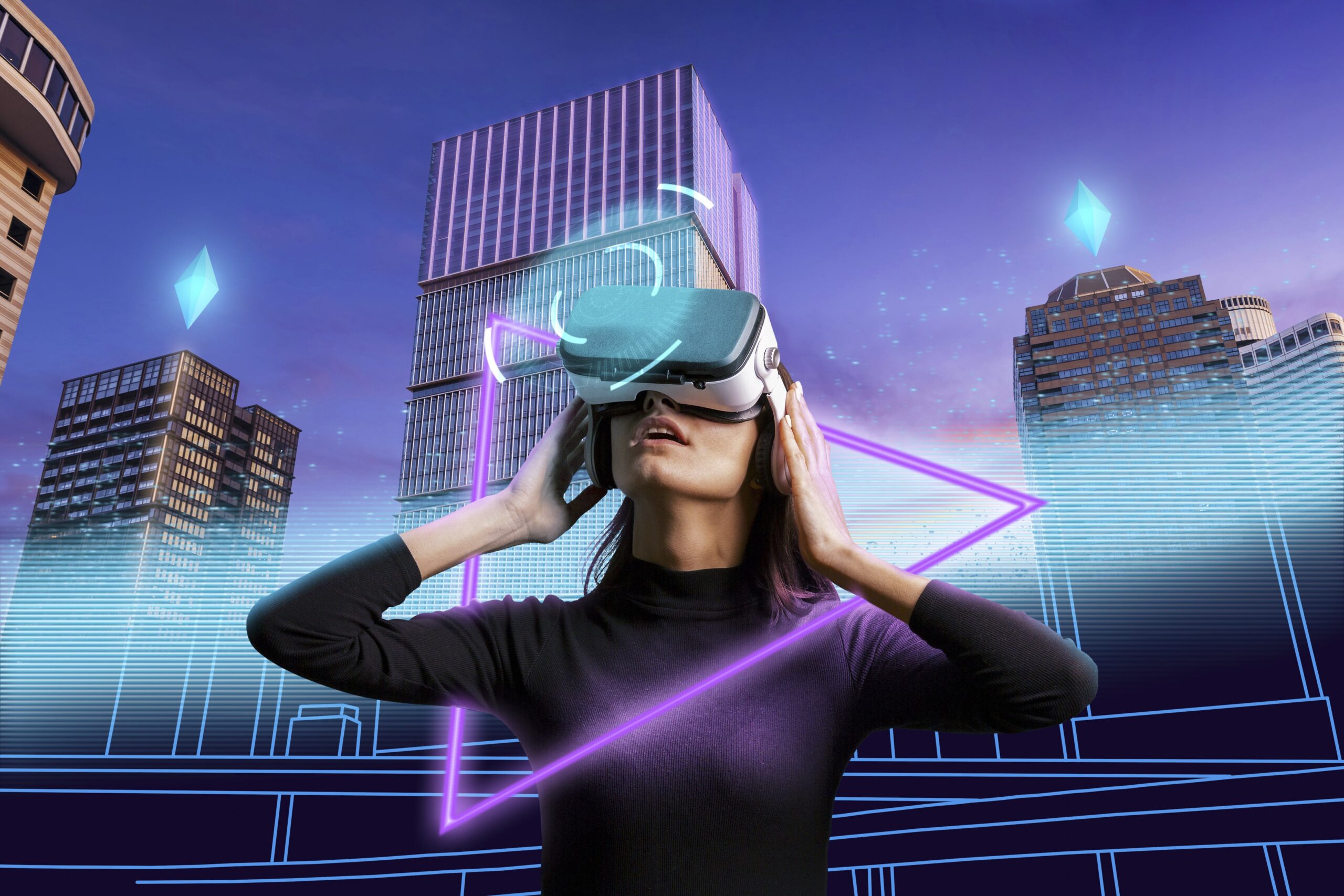Dubai offers rich ground for immersive experiences. Business organizations seeking new ways to present projects, train teams, or connect with audiences turn to virtual reality services in Dubai, drawn by cutting-edge infrastructure and extensive connectivity.
A 2024 industry report predicts the Middle East market will reach over $2.5 billion by 2027, with the UAE accounting for almost half of that value. The guide demonstrates the way in which businesses can embrace virtual reality services in Dubai, from strategic planning to design, development, deployment, and analytics.
Why Dubai Leads
Government initiatives like Dubai 10X support pilot initiatives for new technology, and free zones offer incentives to AR and VR start-ups. Collaborative efforts between local academia and international companies fuel research on uses of virtual reality in the UAE, ranging from urban planning and medicine to the protection of cultural heritage.
A well-trained talent pool familiar with VR development combines technical expertise with artistic ability, making Dubai a world leader in immersive technology.
Applications Across Industries
Real Estate
Developers use virtual walkthroughs that allow potential customers to walk through architectural models prior to build-out. These showings reduce travel costs, hasten purchases, and enhance buyer confidence.
Retail
Store operators launch virtual storefronts through which consumers browse product lines, configure features, and make purchases in real time. These virtual reality services increase customer interaction and raise conversion rates.
Corporate Training
Businesses use VR for realistic safety training, customer service simulation, and component-by-component instructions for intricate machinery. Immersive sessions speed onboarding, decrease accident rates, and cut training costs.
Oil and Gas
Energy providers utilize scenario-based simulations within virtual rigs, allowing field crews to practice emergency procedures without in-world dangers. This application of professional VR development highlights VR’s accuracy within high-risk environments.
Healthcare
Immersive modules for patient treatment, surgical planning, and training of personnel are being embraced by hospitals and clinics. They can simulate intricacies in procedures so as to allow the medical team to acquire a certain technique without having to risk any patient’s well-being in the real world. The virtual reality services thus brought to play will ensure good patient outcomes with a reduced learning curve.
Events and Exhibitions
They are planners of hybrid venues, where on-site and off-site attendees are united in a virtual venue. Tuned portals allow for effortless networking, lounges, sponsor booths, and live demonstrations of products.
Technological Enablers
A concrete tech foundation supports all types of VR projects. If only life had been so easy: in any case, there’s a huge life hack in the Unreal game maker, Unity. A little more, and they wanted to put real-time rendering and physics simulation within reach of all their users at home. Similarly, hardware has expanded from tethered headsets, such as the HTC Vive Pro, to standalone devices, like the Oculus Quest.
Unity and Unreal Engine have definitely matured enough to initiate real-time rendering and physics simulation. Both Unreal and Unity have gotten to the point where real-time rendering and physics simulation have become possible.
Hardware has now developed from a tethered headset like the HTC Vive to standalone devices such as the Oculus Quest. Extending immersion will also include motion tracking and haptic controls along with spatial audio. Interoperate with enterprise systems, CM, LMS, and IoT sensors, and deliver actionable analytics critical to virtual reality services.
Choosing the Right Provider
Vetting prospective vendors against their portfolios for industries such as hospitality, education, retail, and energy can give valuable insight into gauging their worth. Inquire about how many engines, headset support, and back-end system integration have been received.
Verify their local presence to deliver quick support and maintenance in Dubai. Determine their UX design skills, including intuitive navigation, clear on-screen instructions, and accessibility features for varying audiences looking for virtual reality services.
Best Practices for Implementation
Establish clear goals and key performance metrics, brand recall improvements, lead volume, or employee skill improvements. Create initial low-fidelity prototypes to gain stakeholder buy-in prior to full-scale VR development.
Reduce the size of assets, draw calls, and hardware optimization for more frame rate smoothness. Implement analytics to track user paths, heatmap generation, session lengths, and drop-offs. In another sense, establish collaborative workflows for version control so that feedback loops are in place to push speed-to-market.
ROI Measurement
Prior to release, lay down baseline metrics around session-completion rates, average engagement duration, and conversions. Compare VR performance with traditional degrees of throughput: how much it improves throughput over regular ways, such as videos or class sessions.
Behavioral data will tell users where in navigation or which features are decimated or little used, showing gaps. Make complete reports about immersion engagements related to business performance, thus justifying future investments in virtual reality servicesin Dubai.
Overcoming the Challenges
Due to the technical sophistication and initial costs, these are often stranded projects. Prevents this by starting with small proof-of-concept pilot projects, scaling up by performance. Pilfer cross-disciplinary collaboration in the design-engineering-business team for proper alignment with technology needs and business goals.
Training and documentation prepare the administrators and end users to operate the hardware, deliver patches, and maintain content libraries effectively.
Emerging Trends
The deployment of 5G networks and the expansion of edge computing will transform virtual reality in the UAE from isolated demos to integrated ecosystems. Watch for the emergence of shared virtual offices, digital twins for city planning, and virtual e-commerce showrooms.
Firms that invest in modular VR development platforms today will be able to evolve more rapidly to changing use cases.
Conclusion
Dubai has always led the race in immersing technology, ensuring that businesses can have direct access to world-class virtual reality services in Dubai. Methodically planned, agilely developed, and analytics-driven companies will achieve better engagement, higher-quality learning outcomes, and a revenue gain.
If you’re geared up to see your dreams become reality, wade through Limina Studios, virtual reality services in Dubai, 3D architectural visualization, and bespoke VR development experts. Let our expertise guide your next immersive journey.






















